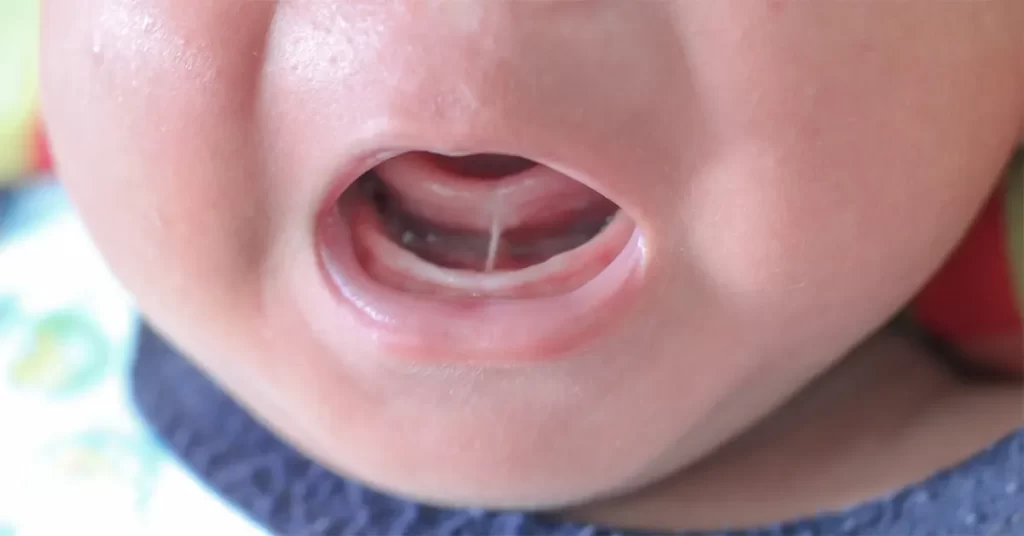Effective communication is a fundamental aspect of human interaction, and speech plays a crucial role in this process. For some children, speech development can be delayed, and various factors can contribute to this delay. One such factor that has garnered attention in recent years is tongue tie, or ankyloglossia. This condition occurs when the strip of skin beneath the tongue (the lingual frenulum) is shorter than usual, restricting the tongue’s movement. In this comprehensive article, we’ll explore the intricate relationship between tongue tie and speech delay, including early intervention options and treatment choices, to provide you with a deeper understanding of this important issue.
Understanding Tongue Tie
Tongue tie, or ankyloglossia, is a congenital condition that affects a baby’s ability to move their tongue freely. This condition occurs when the lingual frenulum is unusually short or tight, restricting the tongue’s range of motion. While tongue tie is commonly associated with breastfeeding challenges, it can also impact various other functions, including eating and, as we’ll discuss, speech development.
The Impact on Speech Development
Tongue tie can influence speech development in several ways:
- Articulation Difficulties: Children with tongue tie may struggle to pronounce certain sounds and syllables correctly. This can result in speech that is unclear or difficult to understand, affecting their ability to communicate effectively.
- Limited Tongue Movement: The restricted tongue movement can hinder the ability to form specific tongue-to-palate contacts necessary for producing sounds like “t,” “d,” “l,” and “s.” These sounds are fundamental in language development.
- Compensatory Patterns: To cope with the limitations imposed by tongue tie, children may develop compensatory speech patterns. These patterns can become ingrained and challenging to correct later on, potentially leading to long-term speech issues.
Early Intervention
Identifying tongue tie in a child experiencing speech delay is essential. Early intervention can make a significant difference in speech development. A pediatrician or a speech-language pathologist can assess the child’s condition and recommend appropriate treatment options.
Treatment Options
Treatment for tongue tie typically involves a simple surgical procedure called a frenotomy or frenuloplasty. During these procedures, the frenulum is cut or released, allowing for improved tongue mobility. In many cases, this can lead to significant improvements in speech development, making it a crucial intervention for affected children.
It’s important to note that the relationship between tongue tie and speech delay is complex. Not all children with tongue tie will experience speech issues, and not all cases of speech delay are linked to tongue tie. However, it is crucial for parents, caregivers, and healthcare professionals to be aware of the potential connection and to consider tongue tie as a factor when evaluating and addressing speech delay in children.
Early diagnosis and intervention can play a vital role in helping children with tongue tie overcome speech challenges and develop effective communication skills. It’s important to seek professional evaluation and guidance when needed to ensure the best possible outcomes for affected children.
The Importance of Early Intervention
Speech and language development in children is a dynamic and complex process. Early intervention is crucial because the first few years of a child’s life are a critical period for language development. Identifying and addressing speech issues as early as possible can significantly improve a child’s long-term communication skills.
When tongue tie is recognized as a potential factor contributing to speech delay, parents and caregivers should not hesitate to seek professional evaluation. A pediatrician or a speech-language pathologist can conduct a thorough assessment to determine if tongue tie is indeed causing speech difficulties. Early intervention measures can then be put in place to address the issue effectively.
Early Intervention Strategies
Early intervention strategies for children with tongue tie-related speech delay may include:
- Frenotomy or Frenuloplasty: If tongue tie is identified as the primary cause of speech delay, a surgical procedure to release the frenulum may be recommended. This simple and relatively quick procedure can improve tongue mobility and facilitate more natural speech production.
- Speech Therapy: In addition to the surgical option, speech therapy is often a valuable part of the treatment plan. Speech-language pathologists work with children to improve articulation, language, and communication skills.
- Oral Exercises: Certain oral exercises may be recommended to help children develop better tongue control and coordination. These exercises can be incorporated into daily routines and practiced under the guidance of a speech therapist.
- Parent Involvement: Parents play a crucial role in the success of early intervention. Working closely with speech therapists and following recommended exercises and strategies at home can further support a child’s progress.
The Benefits of Early Intervention
Early intervention for children with tongue tie-related speech delay offers several important benefits:
- Improved Speech: Correcting tongue tie at an early age can lead to improved speech clarity and articulation. Children can better express themselves and be understood by others.
- Enhanced Communication Skills: Early intervention can help children develop essential communication skills, boosting their confidence and social interactions.
- Prevention of Compensatory Patterns: Addressing the issue promptly can prevent the development of compensatory speech patterns, making it easier to achieve correct speech production.
- Better Quality of Life: Overcoming speech challenges early on can lead to a better quality of life for children, as they can more effectively participate in academic, social, and personal activities.
In conclusion, the relationship between tongue tie and speech delay is a complex one, and early intervention is essential for children facing speech challenges due to tongue tie. Understanding the connection and seeking professional guidance when needed can make a significant difference in a child’s speech development, ultimately leading to improved communication skills and a better quality of life.
What is tongue tie, and how does it affect speech development?
Tongue tie, or ankyloglossia, is a condition where the lingual frenulum beneath the tongue is shorter or tighter than usual, limiting tongue movement. This limitation can lead to articulation difficulties and speech delays.
Does every child with tongue tie experience speech issues?
Not every child with tongue tie will experience speech problems, as it varies from case to case. However, it is essential for parents, caregivers, and healthcare professionals to consider tongue tie as a potential factor when addressing speech delay in children.
How is tongue tie diagnosed, and when should I seek help?
A pediatrician or speech-language pathologist can diagnose tongue tie. If you suspect your child has tongue tie and is experiencing speech delay, it’s crucial to seek professional evaluation and early intervention for the best outcomes.
What is the treatment for tongue tie, and how effective is it in improving speech?
Treatment typically involves a simple surgical procedure to release the frenulum. In many cases, this can lead to significant improvements in speech development. Early intervention is key to achieving the best results.



